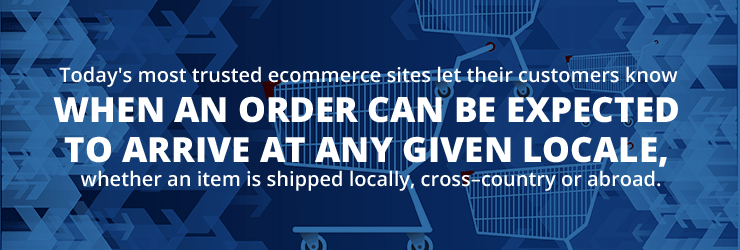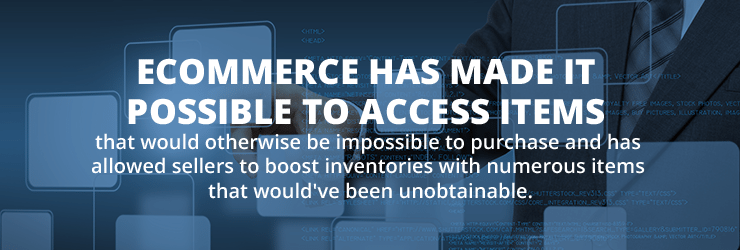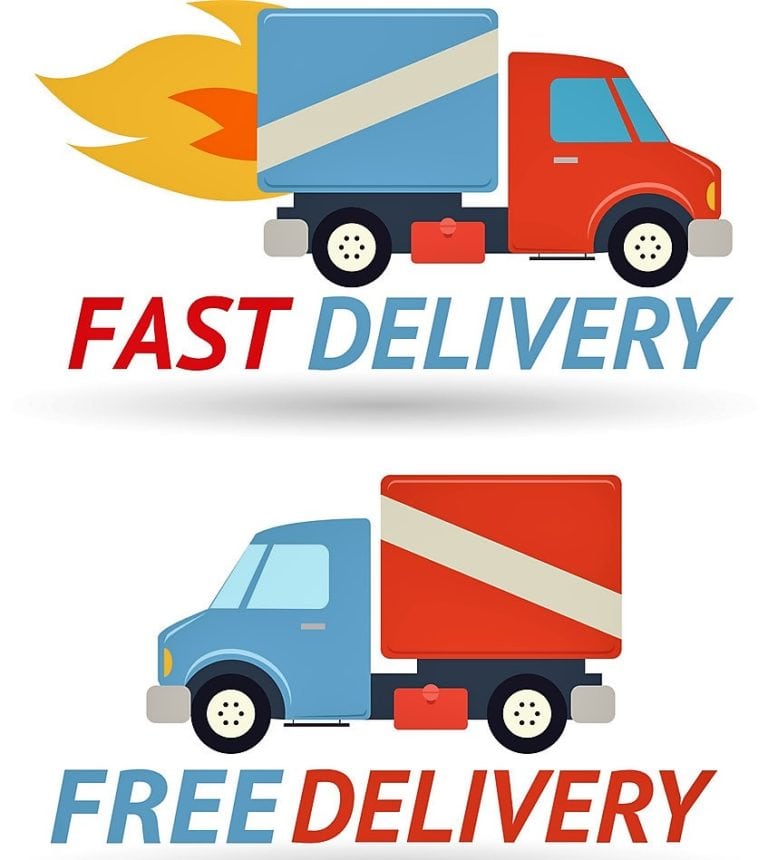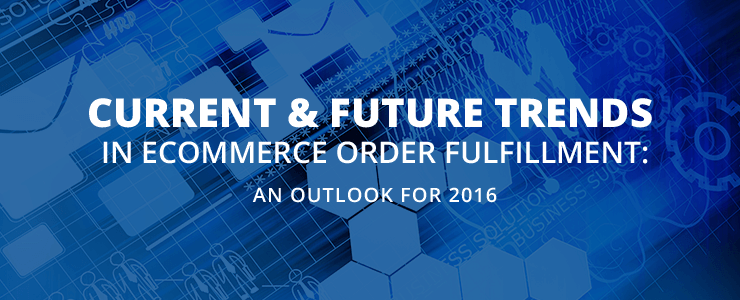
Ecommerce Fulfillment Trends: An Outlook for 2016
Ecommerce
Over the past few years, business has skyrocketed for online sellers. Numerous factors have fueled the trend, including growing confidence in online transactions, increased usage of mobile apps and the ease of being able to shop from any location. As more consumers do significant amounts of shopping online, the stakes have risen in the world of ecommerce. The following article examines the most popular order fulfillment trends to have picked up steam during 2015, as well as the trends that are likely to gain ground as 2016 unfolds.
Looking Back: The Biggest Ecommerce Fulfillment Trends of 2015
Retail sales over the Internet and via mobile devices saw exponential growth during the past 12 months. The mass adoption of this convenient method of shopping has spurred an innovative array of order fulfillment trends. For consumers, technologies were implemented that made the sales process easier. For retailers, methods were adopted that allowed for faster shipments, stronger loyalty building and improved accuracy at determining the hottest times for select products in the marketplace. Without a doubt, the future of order fulfillment will depend on further use and development of the following e-fulfillment trends of 2015.
Improved Means Through Which Customers Can Interact With Sellers
Customers want to feel confident about a purchase during every step of the sales process. To that end, ecommerce websites are now offering more avenues through which buyers can contact customer service representatives. Some of the most common features that sites are offering to meet this demand include links to live video chat, social media correspondence and prominently displayed toll-free numbers. Whether someone wants to know more about certain items or has specific inquiries on prices, shipping or return policies, the availability of live sales staff gives each customer the assurance that his or her concerns are being tended to throughout a given transaction.
Ability for Customers to Know When a Product Will Be Shipped and Delivered
In the old days, when everyone bought their merchandise in person at nearby department stores, there was no need to question when an item would finally be in the customer’s hands. As more people shop online, however, new layers of assurance are needed so customers don’t get worried or impatient about the status of an order. Therefore, today’s most trusted ecommerce sites let their customers know exactly when an order can be expected to arrive at any given locale, whether an item is shipped locally, cross–country or abroad. Additionally, many sellers now provide FedEx and UPS tracking numbers, which allow customers to verify the day–to–day whereabouts of en route packages.
Combined Perks Between In-Store and Online Shopping
A lot of retailers are using mobile apps to enhance the experience of in-store shopping. For example, it’s now common for apps to contain information about products and availability at each location of a retail chain within a given area. Retailers have also boosted the popularity of apps among consumers by offering special discounts that are exclusively redeemable via mobile phone.
Easier Policies and Procedures for Item Returns
For years, the bane of online shopping had been the return process, which was typically fraught with costs, complications and confusing paperwork for the customer. These days, retailers understand that this can lead to bad ratings on Yelp and throughout social media, and have therefore taken steps to simplify the process through which items are returned for replacements, exchanges and refunds. In addition to offering free return shipping, some online sellers are now including return slips in each delivery package, just in case a customer decides to exercise that option.
Increased Accuracy in Determining Seasonal Ecommerce Sales
Just like in the brick–and–mortar world, products move in fits and starts for ecommerce websites. In order to adjust to supply and demand, online retailers are harnessing the powers of analytics to determine seasonal and market trends with each passing month. Based on that information, retailers are now better equipped to keep staff, stock and delivery schedules synchronized to ever-changing demands.
Loyalty-Building Through Special Services
In an effort to build customer loyalty over extended periods of time, a growing number of online merchants are implementing subscription models, whereby customers are mailed packages at set intervals over select timespans. By offering subscriptions, retailers are able to place their brands into the minds of consumers more permanently over the long haul.
Personalizing the Package for Each Customer
Everyone likes to hear and read his or her own name. In contexts where a personalized level of familiarity is not quite expected, the experience is even more special. A perfect example is mail-order packages, on which customers expect to see their names and addresses on top, but don’t expect to find personalized messages inside. By including friendly, personalized messages in each package, it makes each customer feel special and valued – and it enhances the joy that comes each time an order arrives.
Some online sellers are now shipping packages complete with personal greetings that invite the customer to get in touch if any questions arise about a given product. In many cases, this gesture leads to increased customer loyalty, social media buzz, word-of-mouth referrals and glowing product and company reviews.
Improved Means of Managing Warehouses and Fulfillment Centers
Thanks to improved technology, online businesses are now better equipped to track and manage the supply, volume and transportation of products. This has allowed sellers to fulfill orders with greater speed while keeping stocks routinely updated to meet with current as well as upcoming demands in the consumer marketplace.
Looking Forward: E-Fulfillment Trends for 2016
As consumers do increased amounts of shopping via PCs, laptops, iPads and Androids, some companies are leading the way with incentives for making purchases via websites and mobile apps. At the same time, other companies are scrambling to stay relevant and meet the ever-changing demands of the consumer marketplace. Whether a given company is ahead or behind the ecommerce curve, various trends are catching on that are designed to make online transactions easier for sellers and customers alike.
In order to ship products of all weights and sizes as fast as possible to any given location across the globe, the following methods are bound to see more widespread adoption during 2016.
Ability to Accommodate Orders of All Sizes
Gone are the days when the online marketplace was limited to small and lightweight items. As more people adapt to the convenience of being able to shop from anywhere with an iPhone or Android in hand, sales for larger items have increased. After all, when it comes to heavy appliances and furnishings, most folks find it easier to have the item shipped in than to haul it home by car. To satisfy orders for items of all weights and sizes, the future of online sales will depend on expansions in warehouse space and improvements in layout and fulfillment.
Expansion of Markets Across the Globe
The Internet knows no national boundaries, and has thus led to the globalization of markets for any brand with the means to accommodate international demand. In some of the more remote parts of the world, ecommerce has made it possible to access items that would otherwise be impossible to purchase. At the same time, the Internet has allowed sellers to boost inventories with numerous items that would’ve been unobtainable two decades ago.
However, expansion of markets into newfound territories means sellers must harness ways to keep up stock and fulfill shipments with greater efficiency to all parts of the world. As of now, sellers must deal with many different currencies in order to serve customers within these markets. In the years ahead, however, digital currency is likely to play a larger role in global ecommerce. As soon as online retailers have the ability to accept Bitcoin payments from anywhere, it will lower the challenge of competing on a global scale while maximizing the potential of smaller brands to tap into foreign, remote markets.
Adoption of Cloud-Based Software
Fulfillment technologies geared for cloud servers have been designed to work with shopping carts and mobile apps, thereby facilitating transactional ease on the consumer end. For retailers, cloud technology facilitates supply management by making it easier to gather information that can then be used to make business decisions. Though the technology has seen its share of setbacks due to security breaches, the methods for protecting data have since grown stronger within cloud space. Thanks to data encryption, it’s now impossible for hackers to access data without decryption keys. The number of businesses embracing this technology is only expected to increase as more improvements are added to cloud security.
Utilization of Regional Fulfillment Centers
As the world of ecommerce strives for faster deliveries and sellers compete to offer the best deals to customers, more businesses will employ localized fulfillment centers as a low-cost means for achieving the speediest shipments possible. Home Depot, for example, is setting up regional centers of distribution in order to ship things faster to stores and customers in the northern, western, and southern parts of the United States. From the retailer’s Atlanta location, orders are being fulfilled to customers in the Deep South, while similar centers are also set to open in California and Ohio. Collectively, the three warehouses will contain 4 million square feet of space with a capacity for 100,000 SKUs. The method has not only led to faster delivers, it has also boosted sales at each Home Depot location, where 43 percent of online shoppers buy extra products when they come to claim their main items.
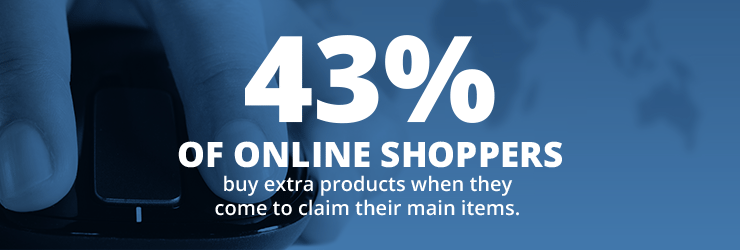
Real-Time Inventory Management
Big-name supply chains will introduce a range of on-floor mobile functions – such as sensors, beacons and point-of-sale systems – that will speed up the processes of item checkout and inventory replenishment. Shoppers equipped with smartphones or tablets will have the option of selecting items from shelves and then exiting the stores with the prices auto-deducted from their digitized credit cards. From the back rooms, on-shelf supplies will be tracked, restocked, reordered and reproduced on an as-needed, automatic basis.
Reorganization of Infrastructure Among Retailers
In response to the complex demands that online and mobile business has brought about on the marketplace, longstanding retailers will be restructuring how they operate at every level. The most important adjustment will be the speed at which each department of a given retailer operates and communicates with one another. As ecommerce leads to increased business from long-distance and international markets, retailers will have to work more closely with logistics departments to ensure that fulfillments are met at every level.
Increased Transportation Rates on Shipments to Online Customers

In light of two fuel surcharges over the past year, FedEx and UPS have implemented a rate hike of 4.9 percent for 2016. In all likelihood, the hike will be reflected throughout the motor–freight sector, which will seek to keep its profits high. Previously, high fuel costs and stiff freight competition led to small margins for carriers. Recently, the sector has been hit with a drop in drivers, which has resulted in fewer available trucks and hence higher rates. Despite lowering diesel costs, the rising truck rates are likely to continue for the foreseeable future.
Collaboration Between Companies to Expedite Processes
Some companies in the shipping sector are working in collaboration with one another to achieve greater efficiency. For years, shippers have relied on third-party logistics providers as part of an ongoing effort to enhance the means of transportation and secure the capacity levels needed to fulfill customers globally. While that practice continues, competing shippers are now also starting to collaborate in an effort to cut down on freight costs. An example of the practice would be a case in which two locally based industrial shippers opt to share the same carrier in order to maximize loads at the lowest costs possible.
Heightened Efforts Toward Sustainability
Across all industries, steps are being taken to implement practices that are friendlier to the environment. In response to growing demand among consumers and the science community for action against the threats of climate change – and to the consternation of some well-moneyed figures in the fossil-fuel industry – the U.S. Environmental Protection Agency is stepping up efforts to address the matter with a strict set of emission restrictions for 2016. Such changes are bound to impact the ecommerce sector, which heavily relies on the industry of freight transportation, which has long been responsible for high levels of pollution.
As green-initiatives take center stage on this increasingly depoliticized, universally acknowledged problem, the logistics firms that serve the world’s big-name retailers will need to develop solutions as each challenge unfolds.
In less than a decade, numerous innovations in digital technology have forever altered the ways in which purchases are made and sales are received. For retailers, the stakes are higher than ever to stay abreast of these changing technologies to meet the high-paced demands of consumers on a regional, national and international scale. Over the next 12 months, issues regarding cloud servers, global markets, transportation and sustainability are certain to be among the foremost concerns that fuel 2016 fulfillment trends.

